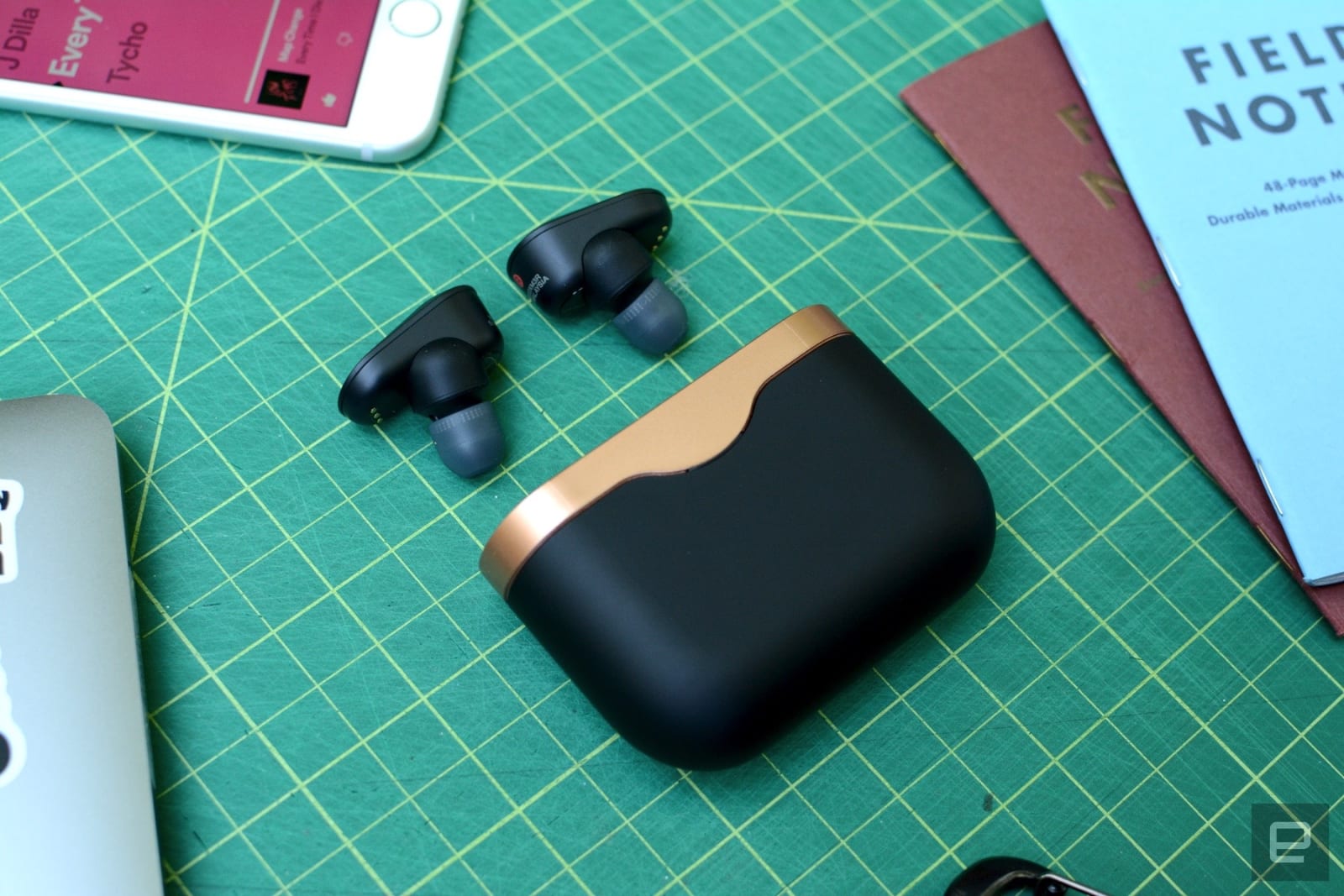

The Headphones app will also allow you to change the Adaptive Sound Control settings, turn off that DSEE HX tech and change the function of the buttons on each earbud. However, your options are super limited there. You can choose between playback controls (play/pause and skipping tracks), Ambient Sound modes (on, off, noise-canceling) and Google Assistant. That’s it. I found it best to have playback controls on one side with the Ambient Sound options on the other. And no, there’s no option for onboard volume control. It’s my main gripe with the WF-1000XM3. Every time you want to change the volume, you have to grab your phone or reach for your laptop. There is, however, a “quick attention mode” that’s super handy. If you cover the left earbud with your hand, the music reduces to a low hum so you can hear what’s going on around you. This is also available on Sony’s XB900N headphones.
In addition to improved ANC and audio, Sony built a new Bluetooth chip for the WF-1000XM3. In addition to the usual connectivity improvements, sound is transmitted to both earbuds simultaneously, rather than beamed to one and then from that one to the other. Indeed, the Bluetooth is reliable, and I never experienced any dropouts. Ditto for video: not once did I encounter a time where the audio didn’t sync up with the visuals.
Battery life is another area Sony bests much, if not all, of the competition. The company claims the WF-1000XM3 will last six hours on a charge with ANC turned on, or eight hours with noise-canceling off. I had no problems hitting that mark, and the included charging case helps keep the buds topped off. The case is larger than a lot of the ones I’ve seen, and it won’t fit in your pocket most likely. Despite the added bulk, it does offer three additional charges or an extra 18 hours of total listening time. There’s also a quick-charge feature that will give you 90 minutes of listening after 10 minutes. Handy if you drain them at the office and need to block out your commute with a podcast.
But it’s worth noting, the design isn’t for everyone. The buds stick out of your ear quite a bit, and they’re larger than Sony’s previous true-wireless models — like the WF-SP700N. Unlike that sporty option, the company ditched the fin. Instead, there’s a hump right under the tip that helps them stay in place. Despite the extra heft on the outside, the WF-1000XM3 stays put for the most part, once you find the perfect-sized tips for your ears. Still, these look like you’re wearing two Bluetooth headsets — like you’re someone super important … from 2006. If you’re hoping to be discreet with your true-wireless earbud choice, these probably aren’t the best option.
In terms of alternatives, Sennheiser is probably the closest sound-wise, but I found the Momentum True Wireless frustrating to use, especially the onboard controls. Plus, it costs $300. I also really like the sound of Master & Dynamic’s MW07, but they’re still $299, and the battery life isn’t great. Honestly, with Sony coming in at $70 or less than a lot of “flagship” true-wireless earbuds, it’s hard to recommend any of the alternatives. But hey, they’re out there if you need to shop around. Sony has a super compelling package, and it’s better than the pricier options. The only reason to consider something else is if you want to take your buds to the gym. And in that case, the PowerBeats Pro are the best-sounding alternative that won’t buckle when they get sweaty.
With the WF-1000XM3, Sony has brought its true-wireless earbuds up to the level of its best-in-class headphones. Powerful noise-cancellation, improved Ambient Sound mode and incredible sound quality make these the best option under $300. And really, they’re probably your best bet at any price.






